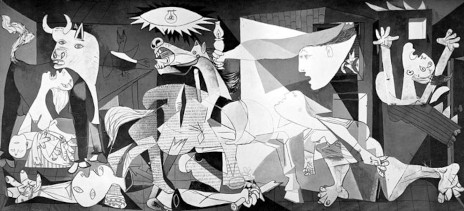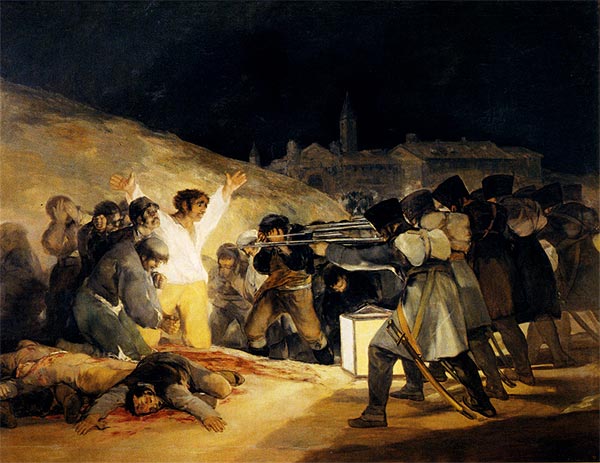Turtle
Veteran
I agree. But its all about sex. The below is very general and not specifically in relation to the Delahaye's of this world.
The market and the resultant impact on the position it leaves the photographer in from a commercial and personal marketing perspective has been profound. There is not only the pro/commercial marketplace but the amateur one too and the line between the two is increasingly blurry.
Photography used to be a miracle all by itself. When photographers took their controlled magic into the realm of the unknown, you had an intrepid character who brought back images that changed people's lives and shaped their perceptions. There was huge power associated with that and the status came with it. Now that every man/woman and his dog (certainly the odd cat) is a photographer, the magic - the competitive edge - has to be generated at another point in the process... either for commercial viability or (and here I get Darwinian) in terms of what photography is as a reflection of the person doing it. For some it is 'conceptual' and for others it is more orthodox, but unless it is put forward as art in some form (or technical achievement, this area being very competitive of course but not relevant to photojournalism) it is now no longer discernable from other services... just like fixing a sink and that does not snap knicker elastic.
The commercial reality needs no further explanation and for those not working on a professional basis, well, it just isn't sexy enough on its own any more. Sure, millions of amateurs do it for pure enjoyment, but every hobby/label we wear has a public aspect to it as it says things about who we are to our own and the opposite sex. Just as few would mention a passion for fantasy re-enactment wargaming on a hot date, what photography 'is' does have an impact on all photographers whether they like it, admit to it, or understand it or not. No longer does 'I do photography' necessarily mean Einstein meets Indiana Jones meets poet. It often means 'I have a DSLR and can hold down better relationships with computers than people.' It needs explanation to be sexually relevant and art has always been sexy (I am sure a good evolutionary biologist could explain why in very simple terms). This might all sound ridiculous, but I don't think it is. Millions upon millions of people are shifting in response to a changing environment and it is not just the mainstream professional realm that is driving this. How can it be? After all, its the amateur/semi pro areas that are partly responsible for the assault upon mainstream photojournalism!
So I guess what I am trying to say is that this is marketplace (environment) induced photographic speciation! 'Just' being a regular generic 'functional' photojournalist is commonly regarded as being a fairly crazy career choice if you are starting out because of the pool is now both small and full of big fish. What's more, it won't make you money as a pro and it won't win you honeys either - the girls/guys just aren't impressed anymore because it no longer says what it used to about the person saying it!
One needs to be a technical/creative maestro or an artist to have any currency since the basic act of picture taking/making became so easy. The artist route is much more accessible in many respects, because you don't have to be good at anything apart from self-promotion (so it is open to people with one or both of two talents). You certainly don't have to have any photographic ability (in the hands on sense because you can work using other people's images, 'found' work or using casual snaps). Personally, I think this explains the epic proliferation of 'conceptual photography.' Digital media has provided a chimpanzee proof means for increasing your 'fitness' with bugger all investment. Any member of the human species should leap at the opportunity. The natural world is full of ruses and strategies to increase competitiveness and art is a wonderful hidey hole for such antics. Digital photography has simply made it easier to play for that egde. The fact that I have relatively little interest in conceptual photography either means that I lack the genetic flexibility to survive in this changing environment, or that I have some other photographic talent to trade upon. As to which it is, only time will tell. Thankfully, I met the mother of my children when just being 'into photography' (with no elaboration) still carried some weight.
Disclaimer: Not all of the above is entirely 100% serious, however, most of it is. I'm just not sure which bits.
The market and the resultant impact on the position it leaves the photographer in from a commercial and personal marketing perspective has been profound. There is not only the pro/commercial marketplace but the amateur one too and the line between the two is increasingly blurry.
Photography used to be a miracle all by itself. When photographers took their controlled magic into the realm of the unknown, you had an intrepid character who brought back images that changed people's lives and shaped their perceptions. There was huge power associated with that and the status came with it. Now that every man/woman and his dog (certainly the odd cat) is a photographer, the magic - the competitive edge - has to be generated at another point in the process... either for commercial viability or (and here I get Darwinian) in terms of what photography is as a reflection of the person doing it. For some it is 'conceptual' and for others it is more orthodox, but unless it is put forward as art in some form (or technical achievement, this area being very competitive of course but not relevant to photojournalism) it is now no longer discernable from other services... just like fixing a sink and that does not snap knicker elastic.
The commercial reality needs no further explanation and for those not working on a professional basis, well, it just isn't sexy enough on its own any more. Sure, millions of amateurs do it for pure enjoyment, but every hobby/label we wear has a public aspect to it as it says things about who we are to our own and the opposite sex. Just as few would mention a passion for fantasy re-enactment wargaming on a hot date, what photography 'is' does have an impact on all photographers whether they like it, admit to it, or understand it or not. No longer does 'I do photography' necessarily mean Einstein meets Indiana Jones meets poet. It often means 'I have a DSLR and can hold down better relationships with computers than people.' It needs explanation to be sexually relevant and art has always been sexy (I am sure a good evolutionary biologist could explain why in very simple terms). This might all sound ridiculous, but I don't think it is. Millions upon millions of people are shifting in response to a changing environment and it is not just the mainstream professional realm that is driving this. How can it be? After all, its the amateur/semi pro areas that are partly responsible for the assault upon mainstream photojournalism!
So I guess what I am trying to say is that this is marketplace (environment) induced photographic speciation! 'Just' being a regular generic 'functional' photojournalist is commonly regarded as being a fairly crazy career choice if you are starting out because of the pool is now both small and full of big fish. What's more, it won't make you money as a pro and it won't win you honeys either - the girls/guys just aren't impressed anymore because it no longer says what it used to about the person saying it!
One needs to be a technical/creative maestro or an artist to have any currency since the basic act of picture taking/making became so easy. The artist route is much more accessible in many respects, because you don't have to be good at anything apart from self-promotion (so it is open to people with one or both of two talents). You certainly don't have to have any photographic ability (in the hands on sense because you can work using other people's images, 'found' work or using casual snaps). Personally, I think this explains the epic proliferation of 'conceptual photography.' Digital media has provided a chimpanzee proof means for increasing your 'fitness' with bugger all investment. Any member of the human species should leap at the opportunity. The natural world is full of ruses and strategies to increase competitiveness and art is a wonderful hidey hole for such antics. Digital photography has simply made it easier to play for that egde. The fact that I have relatively little interest in conceptual photography either means that I lack the genetic flexibility to survive in this changing environment, or that I have some other photographic talent to trade upon. As to which it is, only time will tell. Thankfully, I met the mother of my children when just being 'into photography' (with no elaboration) still carried some weight.
Disclaimer: Not all of the above is entirely 100% serious, however, most of it is. I'm just not sure which bits.
Last edited:





